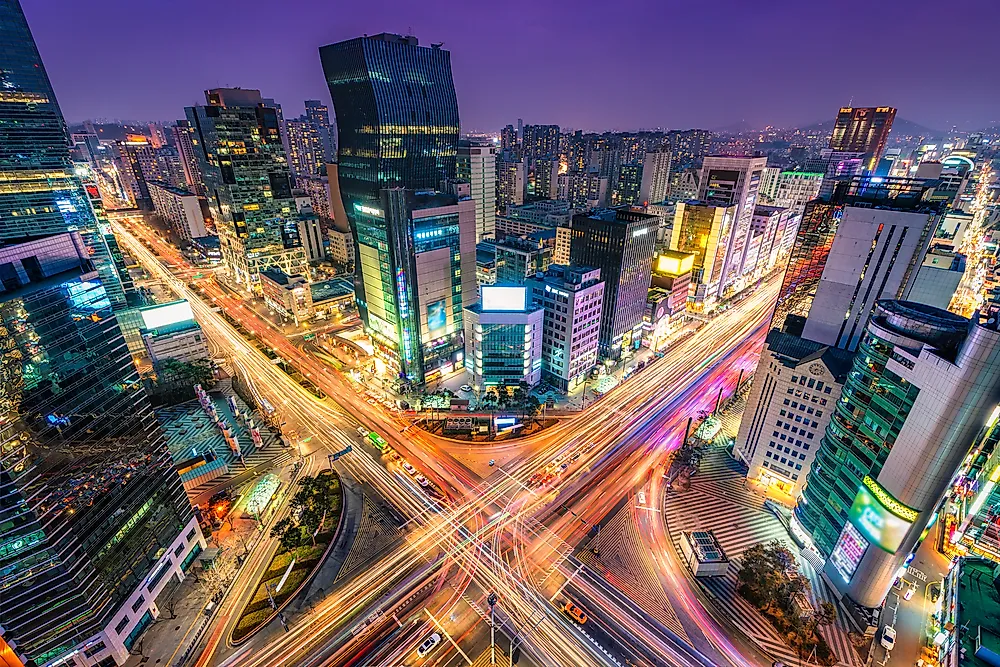What is a Megacity?

What is a Megacity?
A megacity is defined by the United Nations as a city which has a population of 10 million or more people. Currently, there are 37 megacities in the world. These cities include Tokyo, New York, Paris, Berlin, and Bangkok among others. The 2017 UN statistics indicate that the cities with the largest populations worldwide are Tokyo and Shanghai with 38.8 million and 35.5 million people respectively. Recently, the UN has predicted that the number of megacities will rise to 41 by the year 2030.
Background of the Growth of Megacities
In the 1st century BC, Rome was the largest and wealthiest political city in Europe and had a population of one million people. However, its population declined to 20,000 during the Early Middle Ages. Baghdad was the largest city from 762-1930 AD with a population of one million. Apart from these two cities, Chang'an experienced influx in its population after the 1930s. From 1825 to 1918, London was the world's largest city with a population of over 5 million. This was followed by New York City which had a population of slightly over 10 million in the 1950s. Since then, the populations of cities has been growing tremendously. The number of megacities grew from nine in 1985, to 19 in 2004, to 25 in 2010. Today the number of megacities stands at 37 in the world.
Challenges Megacities Face
Due to their high populations, megacities face several challenges. These challenges revolve around slums, crime, energy and material resources, homelessness, and traffic congestion. Slums are settlement areas which are characterized by improper housing facilities and poor sanitation. They have been caused by the rise in population and massive local and international immigration. Individuals who live in slums seldom receive access to proper education, healthcare, and housing. Slums are generally found in cities in developing countries. The rise of criminal activities due to discontentment of city residents is another limitation megacities face. A lack of fulfillment of basic needs such as food, water, and shelter can increase crime rates. Some cities with high crime rates include Lagos, Mumbai, and Rio de Janeiro. Megacities also face the challenge of managing limited energy and material resources such as electricity and water consumption, waste generation, transport energy, and steel production. There are many children and families who live on the streets in many megacities in spite of they many attempts by government and non-governmental organizations to end homelessness. The final challenge is traffic congestion which refers to transport delays that occur on the roads as a result of increase of use. One of the cities which experiences huge traffic delays is Bangkok.
Solutions to Challenges Faced by Megacities
Traffic congestion can be resolved by expanding roads and minimizing the use of private cars when commuting to work. People can use public transport and leave their cars at home. The challenge of high crime rates can be reduced by providing employment opportunities to individuals who are unable to secure jobs. Once employed, people are able to earn a decent living from their income. An increase in job opportunities and encouraging citizens to engage in business would also help solve the challenges of slums and homelessness.
Cities the UN Classifies As Megacities
| Rank | Megacity | Population (Millions) |
|---|---|---|
| 1 | Tokyo | 38.1 |
| 2 | Delhi | 26.4 |
| 3 | Shanghai | 24.5 |
| 4 | Mumbai | 21.4 |
| 5 | Sao Paulo | 21.3 |
| 6 | Beijing | 21.2 |
| 7 | Mexico City | 21.2 |
| 8 | Osaka | 20.3 |
| 9 | Cairo | 19.1 |
| 10 | New York | 18.6 |
| 11 | Dhaka | 18.2 |
| 12 | Karachi | 17.1 |
| 13 | Buenos Aires | 15.3 |
| 14 | Kolkata | 15 |
| 15 | Istanbul | 14.4 |
| 16 | Chongqing | 13.7 |
| 17 | Lagos | 13.7 |
| 18 | Manila | 13.1 |
| 19 | Guangzhou | 13 |
| 20 | Rio de Janeiro | 13 |
| 21 | Los Angeles | 12.3 |
| 22 | Moscow | 12.3 |
| 23 | Kinshasa | 12 |
| 24 | Tianjin | 11.6 |
| 25 | Paris | 10.9 |
| 26 | Shenzhen | 10.8 |
| 27 | Jakarta | 10.5 |
| 28 | Bangalore | 10.5 |
| 29 | London | 10.4 |
| 30 | Chennai | 10.1 |
| 31 | Lima | 10 |











